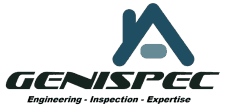What Does a Building Inspection Report Look Like?

Obtaining a good quality building inspection report is essential to be able to properly inform yourself about the true condition of the building you intend to buy. It is therefore better to do business with a building inspector who will give you a clear, complete, and informative report. The purpose of this article is to answer the question, “What does a building inspection report look like?” It will help you to better understand the importance of a good inspection report by highlighting the elements it should contain.
A clearly written report can serve to avoid litigation by facilitating amicable settlements in case of problems or disputes. For example, in the case of a leaky roof or a crack in the foundation, a detailed inspection report can confirm whether the problem was visible before the purchase of the building. In This way, a clearly written report protects both parties to the transaction – the buyer and the seller – because it leaves no doubt concerning their respective responsibilities.
The narrative report is written following analysis of the results of the visual inspection of the building by the building inspector who must sign it and indicate the date of the inspection.
Here, then, is what a good building inspection report looks like.
The inspection report should give information on what was or was not visible
The report must clearly indicate the parts of the building which were accessible and visible during the inspector’s visit – and it must do so in a precise and detailed way. It would not be sufficient for the inspector to write that “part of the foundation was no invisible.” It would be much more explicit to write that “the foundation at the front of the building was not visible on the left” and to include why this part of the foundation was not completely accessible. For example, the inspector could specify that “a section of siding prevented the foundation from being seen at that point.” The goal is to leave no doubt about which elements were inspected and evaluated.
The report should contain a description of each inspected component
For each component inspected, the inspection report should cite the component type and describe the component in detail as well as indicate its current condition. Any anomaly must duly be noted. When a component is in excellent condition, this should also be noted. The goal is to provide an accurate picture of the actual condition of the building at the time of the inspection in order to protect both the buyer and the seller during the transaction.
The report should include images of inspected components
Photographs are used to illustrate the descriptions of the components inspected and evaluated. To do so, the images should be marked with arrows indicating the components and accompanied by written clarifications and explanations. The goal is to provide as much detail as possible in order to fully understand the condition of the building.
The report should indicate the temperature at the time of the inspection
Weather conditions at the time of the the visit can affect inspection procedures. For example, an inspection at the end of a prolonged drought may distort the results, while a winter inspection may not provide an in-depth assessment of the risk of soil subsidence. For these reasons, the inspection report should detail all weather conditions.
The report should be clearly written using plain language
A building inspection report needs to be understandable. The goal is to have a document that establishes the condition of the building at the time of sale. That is why it is better to avoid ambiguous language as well as any obscure jargon.
The report must meet the standards of the AIBQ
The Québec Association of Building Inspectors (AIBQ) protects the public by supervising building inspectors active in Quebec. Its Standard of Practice is a document that informs the general public of the nature and scope of an inspection prior to the purchase of a property. You can consult it (Norme de pratique, in French) to learn about the association’s inspection guidelines for both the inspection itself and production of the report. In addition, you will find definitions of the most important terms related to building inspection. Finally, the AIBQ Standard of Practice is recognized by the courts as the definition of best practices for the profession. This means that only a report meeting these standards can be used in a court decision in the case of a dispute.
The benefits of a good quality inspection report
A quality building inspection report provides you with complete, clear, and accurate information on the condition of the building you wish to purchase. Because the report is based on the inspector’s knowledge and expertise, it is essential to making an informed decision on your purchase. By the same token, the report provides useful information on the maintenance work to plan or the repairs that need to be done. Whether litigation becomes necessary or not, you will be protected.
To conclude, do not hesitate to ask for an example of an inspection report before hiring your building inspector. In addition, it is advisable to hire a building inspection professional who is a member of the Ordre des ingénieurs du Québec (OIQ).
We invite you to contact us. At Genispec Inspections, we will be happy to show you an example of our building inspection reports. By calling on our services, you will be protected against a number of contingencies because all our inspectors are engineers and members of the OIQ. Thorough building inspections completed by Genispec Inspections include an evaluation of a building’s structure in addition to all visible components. Our inspections meet building code standards and go beyond minimum requirements by following not only the best practices of the AIBQ but also ASTM International, a standardization body working on a global scale.
